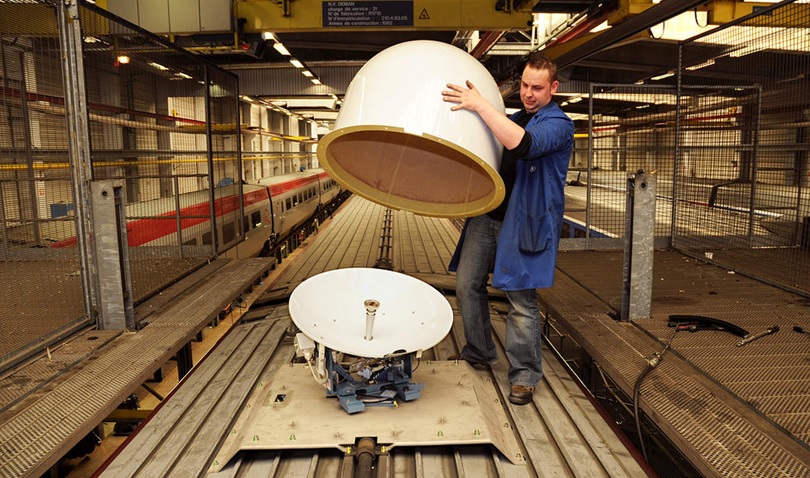With Broadband service NASSAT rail operator can manage dedicated railway applications such as traffic updates last minute ticketing and real-time management of traffic disruptions.
With independent and secure wireless internet connectivity, real-time information and online payments can be sent and received by shipboard personnel through their Wi-Fi enabled PDA or Smartphone.
Monitoring and Maintenance
Real time tracking Internet Service NASSAT. The Internet service management and constant monitoring is guaranteed by the Operations Center (NOC) NASSAT. The NOC continuously monitors each component of train equipment, including communication sub-system of satellites, Wi-Fi and UMTS modems, routers, servers and access points.
A comprehensive alert system notifies our Monitoring Team identified technical problems on trains, the combination of Internet connectivity with GSM remote control system when the satellite link is available. The NOC also collects usage statistics and detailed records of the operation of all major components of the train.
Installation and maintenance of the system NASSAT: NASSAT has gained considerable experience in working with train operators. Maintaining NASSAT solutions is based on the following principles:
- Maximizing remote interventions to minimize physical interventions on trains
- Include physical interventions within the normal maintenance schedule of trains
- Collaborate with technical train, including training and ongoing monitoring of the use of dedicated equipment NASSAT
Architecture
[...]
The architecture of this system supports multiple connectivity technologies - satellite, cellular, wireless high-speed environment and antennas for Wi-Fi stations and reservoirs - and can add traffic over various technologies and different media, dynamically adjusting the performance for each channel according to the capacity available as cost basis, the algorithm is aware of the location.
[...]






